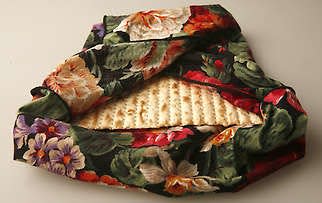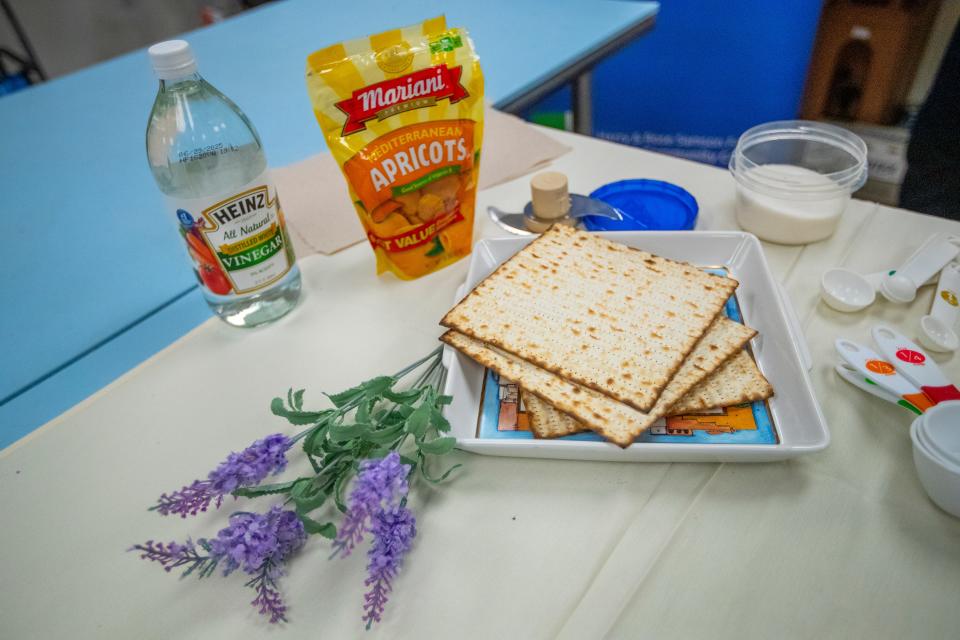Food as a story: How the specific foods at Passover narrate the history of Jewish freedom

There’s not much as tied to tradition as food. For every event or milestone or holiday in life, there’s a dish to go along with it, often becoming almost synonymous with whatever it represents (what’s the first thing that comes to mind when you think turkey?).
But it’s hard to imagine foods that are more closely intertwined with a celebration than the foods of Passover. The ritual meal of this most celebrated of the Jewish holidays is observed by more than 70% of Jewish Americans, some of them here in Louisville, where the Jewish community numbers some 8,000 to 10,000, according to retired Louisville Rabbi Stanley Miles. (Full disclosure: my experience with the Jewish faith or traditions is nonexistent. Fortunately, Miles, a self-professed foodie, was kind enough to shed some light on some traditional foods of Passover and what they mean.)
He was such a patient and thorough instructor that it came as no surprise when he explained that the word rabbi actually means teacher — I felt like I was in a fascinating class listening to him speak. In fact, although he’s no longer active clergy at Temple Shalom, he still teaches adult classes.
Since I didn’t know what I didn’t know, “let's start with the Passover Seder,” Miles said, “the Seder meal that begins the festival. And that sacred meal will be (Friday, April 15) at sundown. And many families also have a second meal the next night at sundown. Passover and the Seder are sort of like a time machine. Symbolically, we're telling the story and eating some of the foods our ancestors ate over 4,000 years ago when we left Egypt after 430 years of Egyptian slavery.”
You may like: Ahead of Passover, these Louisvillians explain why they converted to Judaism later in life
“Now, when we hear someone tell a story,” he went on, “it often begins ‘once upon a time.’ Not this one. This one … says, ‘we were slaves in the land of Egypt and now we are free people.’ Wait a minute. We're talking about over 4,000 years ago. … and that's what I meant by time machine. The telling of the story, the eating of the food, the rituals, we relive that experience.”
And what is the most quintessential food of Passover? The Passover food is matzo, he said. And there are two thoughts about matzo.
“Matzo is the bread of affliction,” Miles said. “It is the basic diet we endured for 430 years of slavery. How do you make matzo? Real easy. You combine water and flour and you put it in a very hot oven. … for exactly 18 minutes. Not 17, not 19. Exactly 18 minutes, because after 18 minutes fermentation and rising begin in matzo. So, that's one theory of matzo.”
“Theory two,” he said, “When … Pharaoh said (to the enslaved people), ‘you leave,’ Pharaoh didn't say,’ take your time.’ They didn't have time to do anything. They didn't have time to bake any bread for the journey. So according to one theory, they made the dough into very thin cakes. And they literally put it on their backs. And it baked in the hot sun as they were leaving Egypt. So we have theory one, the bread of affliction. Theory two bread that was the first taste was freedom.”

You may like: A fast and a feast: How the holiest Jewish holiday, Yom Kippur, is commemorated with food
Isn’t that a lot of baggage for one food?
Not only that but “one of the most simple foods on the planet,” Miles said. “And what does it taste like? Nothing much. Flour and water.”
While there are lots of recipes using matzo that are delicious, he said (matzo lasagna, anyone?), as for the matzo itself?
“We eat that matzo as if we're tasting it for the first time in our lives,” he said, “we are tasting freedom.”
Along with the matzo they have haroset. This combination of fruit, nuts, and wine “looks like mud,” Rabbi Miles explained. “Does it look very appetizing? Are you kidding? Does it taste good? Wow. It's the best.”
“It looks like the same building material with which we built those pyramids during 430 years of slavery. And we eat it together with our matzo with raw horseradish. So we taste the end of slavery and the sweetness of freedom all together in one sandwich.”
More: 'Let all who are hungry come and eat.' How Louisvillians celebrate Passover with food
Along with these foods, and others including a hardboiled egg and bitter herbs — representing spring and the bitterness of slavery — families gather around the table and recount the story of the exodus from Egypt.
“The whole theme is ‘why is this night different from all other nights?’ Because it is the food on the table, the telling of the story, the four cups of wine, the matzo.”

One member of the family will ask four questions, he said. If it’s a multigenerational family, “can you guess who asks the questions?” Miles said. Not the eldest, as I guessed.
Instead, he said, it’s the youngest. “Because the youngest someday will not hear the story, but will tell the story. …So that our tradition will go on no matter what.”
And it’s the food along with that story, he said, that carries the tradition.
Tell Dana! Send your restaurant “Dish” to Dana McMahan at thecjdish@gmail.com and follow @bourbonbarbarella on Instagram.
This article originally appeared on Louisville Courier Journal: Passover 2022: What the foods eaten at Passover mean for Jews

